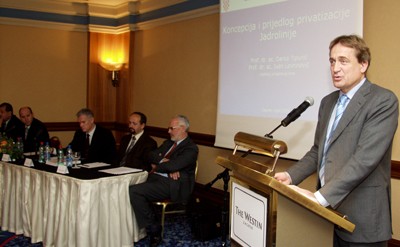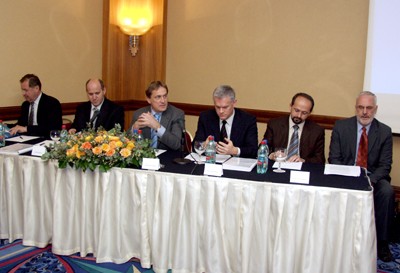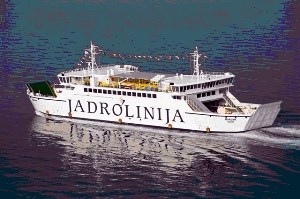- Published: 08.11.2005.
Presentation of Concept for Possible Privatization of Jadrolinija
 The first phase of the Jadrolinija privatization process, in 2006, foresees the assigning of 7% of the company shares to the island local self-government and to employees, the pension and veteran fund will receive each 4%, while the second phase should be performed five years later, i.e. in 2011. At that moment 50% plus one share would be offered via a public tender, but the government is planning to hold on to a control package of 25% plus one golden company share.
The first phase of the Jadrolinija privatization process, in 2006, foresees the assigning of 7% of the company shares to the island local self-government and to employees, the pension and veteran fund will receive each 4%, while the second phase should be performed five years later, i.e. in 2011. At that moment 50% plus one share would be offered via a public tender, but the government is planning to hold on to a control package of 25% plus one golden company share.
This refers to the privatization model of the national ship carrier which was presented today within the study ''Concept and proposal for the Jadrolinija privatization process''. The study was produced by the Zagreb Graduate School of Economics and Business, and commissioned by the Ministry of the Sea, Tourism, Transport and Development.
Listing the reasons for producing such a study, the Minister of the Sea, Tourism, Transport and Development Božidar Kalmeta, explained that Jadrolinija was covering at the moment 90% of all public maritime transport and that the company, once Croatia was an EU member, had to prepare for the open market within domestic and foreign competition.

He added that with new legal regulations, which were still in preparation it was planned to open up the market by introducing a public tender system for all lines in the period of five years.
According to the Minister's words, the offered model of privatization was adding a new perspective to the whole privatization process in Croatia. He said that they were trying to secure the public interest and care for the islands; it would be a catastrophe to neglect that issue. By presenting this new concept and by opening a public discussion regarding a possible privatization of the Jadrolinija, the Government was trying to avoid illegal beneficiation, the loosing of jobs as well as the irrational economy of resources. He added that Jadrolinija was performing a great job and that the number of transported passengers and cars was continuously growing.
The State Secretary of Sea, Branko Bačić, declared that, in 2005, Jadrolinija would transport over 10 million passengers and 3 million cars. This was twice as much as nine years ago when the Jadrolinija Act had been passed. Captain Mario Babić, Assistant Minister for Maritime, Traffic, Maritime Domain and Ports, emphasized how momentarily only a few of the existing 46 state lines were being profitable. Besides those, he explained how the Sate was also financially supporting ten other ship carriers.
 The Dean of the Graduate School of Economics and Business, Ivan Lovrinović, also stated that this was the first time for a government body to ask a science institution to produce such a study which would help the State to control the whole process. The Deputy-Dean, leader of the whole project and author of the study, Darko Tipurić, underlined that the proposed model suggested a new path for a possible privatization of the state portfolio in Croatia.
The Dean of the Graduate School of Economics and Business, Ivan Lovrinović, also stated that this was the first time for a government body to ask a science institution to produce such a study which would help the State to control the whole process. The Deputy-Dean, leader of the whole project and author of the study, Darko Tipurić, underlined that the proposed model suggested a new path for a possible privatization of the state portfolio in Croatia.
Luka Denona the County Vice-Prefect of the Primorje – Gorski Kotar County, thought that it was also necessary to study the concept of a possible non-privatization of the Jadrolinija based on internal restructure, while the president of the Seafarers' Union of Croatia, Vladimir Svalina, stated that it was not necessary to hurry and that Jadrolinija was maybe not the right example to be used for the experiment of a new privatization concept.
Minister Kalmeta announced in the end that a public discussion would be held in one, two months. He confirmed that the topic would be the presented concept and that all interested parties would participate.


